Integral Calculus - Areas
The area bounded by the curve
Curve sketching steps:
For sketching the graph of
i. Determine domain, identifying where
ii. Determine
iii. Determine asymptotes:
(a) For vertical asymptotes, check for rational function zero denominators, or undefined
(b) For horizontal asymptotes, consider
iv. Determine critical numbers,
(check where
v. Determine inflection points.
(check where
vi. plot intercepts, critical points, inflection points, asymptotes and other points as needed.
vii. Connect plotted points with smooth curve.
Some useful results
1. Area between
2. Area between
3. Area between
4. Area between
5. Area enclosed by
6. Area of one
7. Area of the region bounded by
8. Area of
9. Area bounded by
10. Area of rhombus formed by
11. Area of the triangle formed by
Solved Examples:
1. The area of triangle formed by the tangent
(a) 3
(b)
(c)
(d) 4
Show Answer
Solution:
Equation of tangent is
Point
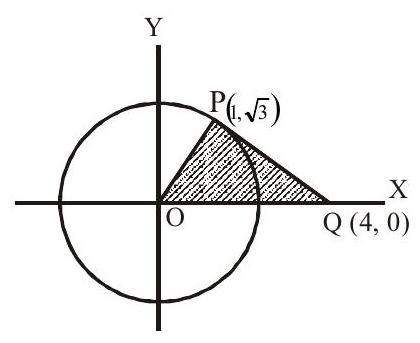
Answer: b
2. The area bounded by the curves
(a)
(b)
(c)
(d)
Show Answer
Solution:
The two shaded areas are congruent
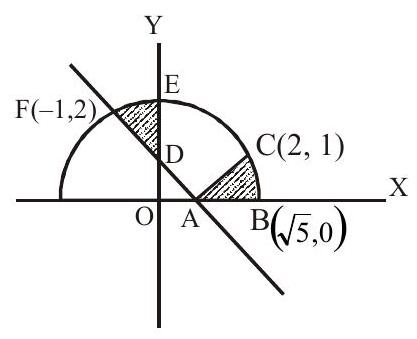
Answer: c
3. If two circles each of unit radius intersect orthogonally, the common area of the circle is
(a)
(b)
(c)
(d)
Show Answer
Solution:
Required area
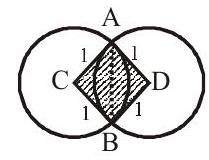
Answer: d
4. The possible values of
(a) -4
(b) -2
(c) 2
(d) none of these
Show Answer
Solution: The curves meet at
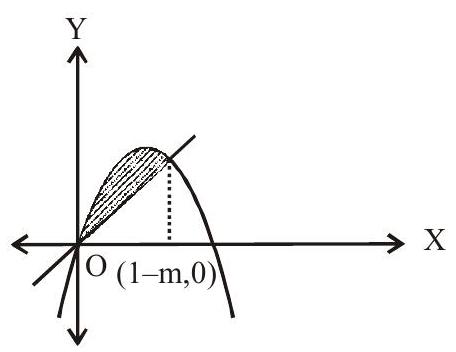
Answer: b
5. The area bounded by the curves
(a) 4
(b) 6
(c) 10
(d) 12
Show Answer
Solution:
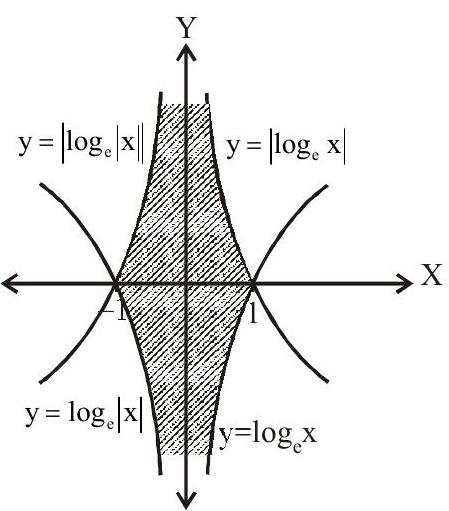
Answer: a
6. The ratio in which the area bounded by the curves
(a)
(b)
(c)
(d)
Show Answer
Solution:
Required ratio
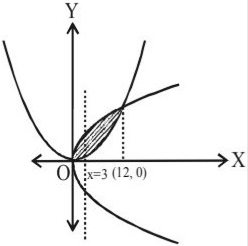
Answer: a
7. The area bounded by the curve
(a)
(b)
(c) 4
(d) 8
Show Answer
Solution:
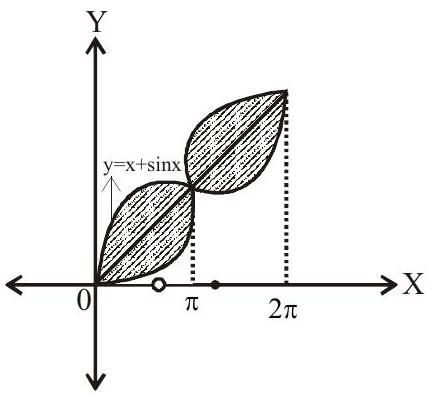
Answer: d
Exercise:
1. The area bounded by
(a)
(b)
(c)
(d) none of the above
Show Answer
Answer: c2. The triangle formed by the tangent to the curve
(a) -1
(b) 3
(c) -3
(d) 1
Show Answer
Answer: c3. The area bounded by
(a)
(b)
(c)
(d)
Show Answer
Answer: a4. Let the straight line
(a)
(b)
(c)
(d)
Show Answer
Answer: b5. The area of the quadrilateral formed by the tangents at the end points of latus rectum to the ellipse
(a)
(b) 9 sq.unit
(c)
(d) 27 sq.unit
Show Answer
Answer: d6. The area of the region containing the points (
(a) 8 sq.units
(b) 2 sq.units
(c)
(d)
Show Answer
Answer: a7. The area of the region between the curves
(a)
(b)
(c)
(d)
Show Answer
Answer: b8. Read the passage and answer the following questions:-
If the curve
i. Equation of curve
(a)
(b)
(c)
(d) none of these
ii. Area bounded by curve
(a)
(b)
(c)
(d) none of these
Show Answer
Answer: (i) c (ii) b9. The maximum area of the rectangle whose sides pass through the angular points of a given rectangle of sides
(a)
(b)
(c)
(d) none of these
Show Answer
Answer: c10. Consider a square with vertices at
Show Answer
Answer:11. The area bounded by
(a) 8 sq.unit
(b) 16 sq.unit
(c) 24 sq.unit
(d) 32 sq.unit
Show Answer
Answer: b12. The area of the region bounded by
(a) 4
(b) 8
(c) 5
(d) 10
Show Answer
Answer: b13. Match the following:-
| Column I | Column II | ||
|---|---|---|---|
| a. | Area enclosed by |
(p) | 8 sq.units |
| b. | Area enclosed by |
(q) | 6 sq.units |
| c. | Area enclosed by |
(r) | 4 sq.units |
| d. | Area enclosed by |
(s) | 12 sq.units |










